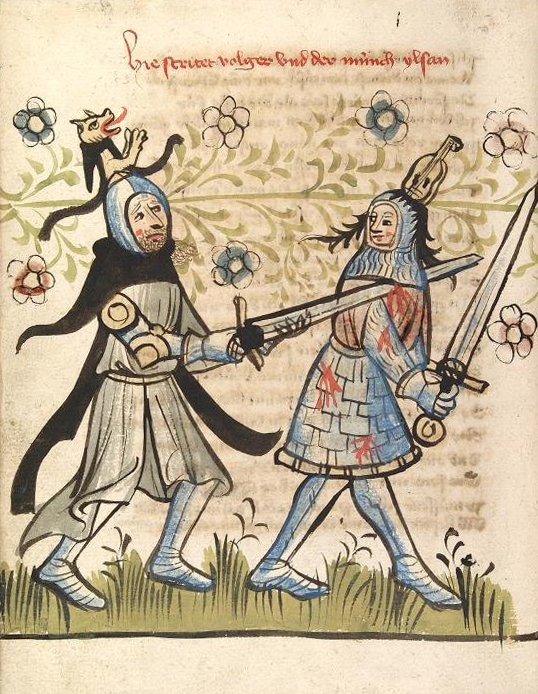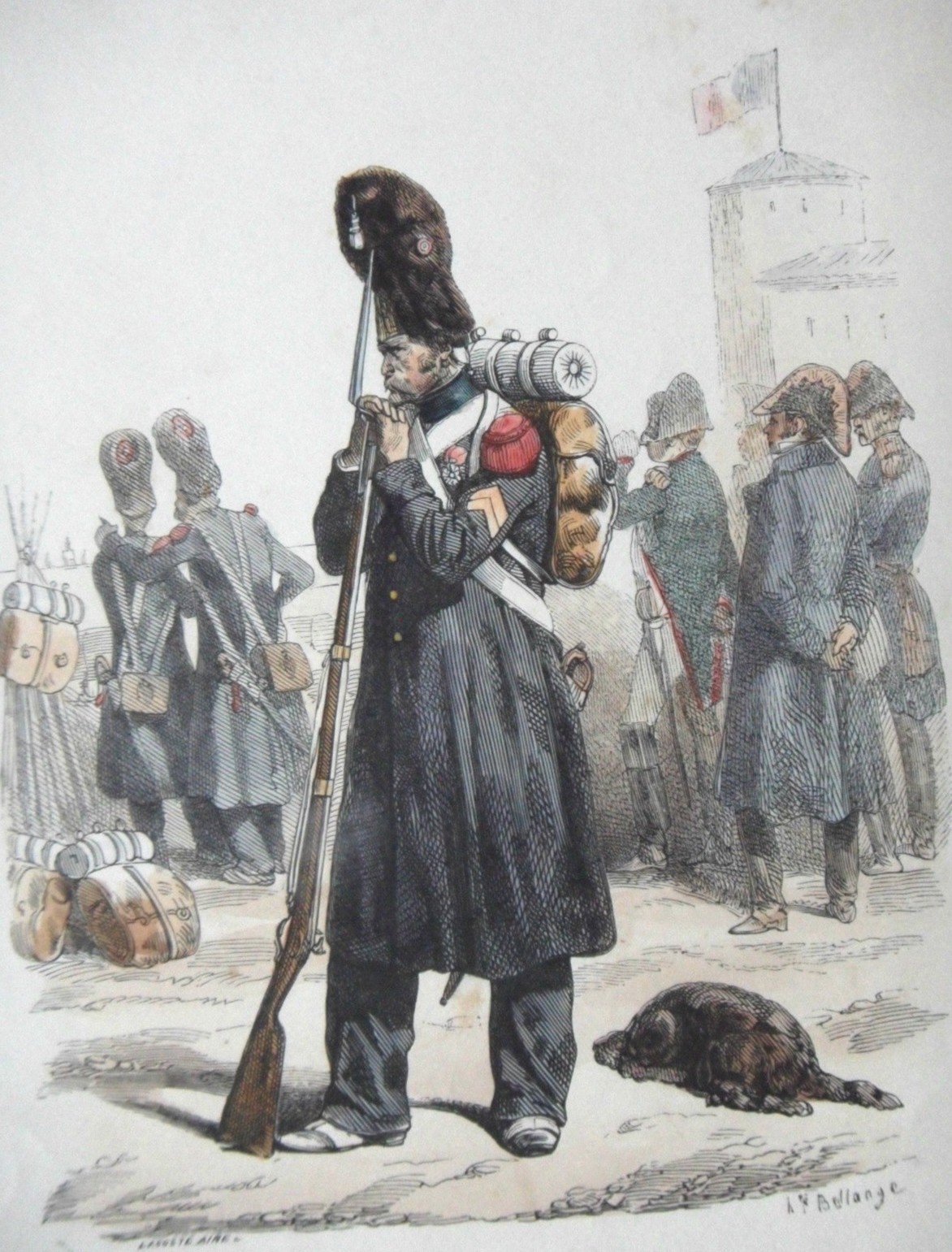|
Cent-gardes Squadron
The Cent-gardes Squadron, ( French: L'Escadron des Cent-gardes), also called ''Cent Gardes à Cheval'' (Hundred Guardsmen on Horseback), was an elite cavalry squadron of the Second French Empire primarily responsible for protecting the person of the Emperor Napoleon III, as well as providing security within the Tuileries Palace. It also provided an escort for the emblems of the Imperial Guard and their award ceremony with flag and standard bearers. The squadron was created by decree on 24 March 1854 by the Emperor. Comparisons were made between the new unit and the British Life Guards. When on duty the Cent-Gardes had to stand absolutely still and render honours only to the Emperor and members of the Imperial family. Although not formally part of the Imperial Guard, they were under the orders of the Grand Marshal of the Palace. Description Headquarters and soldiers The Cent-Gardes squadron consisted of a headquarters, 11 officers and 137 privates, totalling 148 men at the time ... [...More Info...] [...Related Items...] OR: [Wikipedia] [Google] [Baidu] |
France
France (), officially the French Republic ( ), is a country primarily located in Western Europe. It also comprises of Overseas France, overseas regions and territories in the Americas and the Atlantic Ocean, Atlantic, Pacific Ocean, Pacific and Indian Oceans. Its Metropolitan France, metropolitan area extends from the Rhine to the Atlantic Ocean and from the Mediterranean Sea to the English Channel and the North Sea; overseas territories include French Guiana in South America, Saint Pierre and Miquelon in the North Atlantic, the French West Indies, and many islands in Oceania and the Indian Ocean. Due to its several coastal territories, France has the largest exclusive economic zone in the world. France borders Belgium, Luxembourg, Germany, Switzerland, Monaco, Italy, Andorra, and Spain in continental Europe, as well as the Kingdom of the Netherlands, Netherlands, Suriname, and Brazil in the Americas via its overseas territories in French Guiana and Saint Martin (island), ... [...More Info...] [...Related Items...] OR: [Wikipedia] [Google] [Baidu] |
Life Guards (United Kingdom)
The Life Guards (LG) is the senior regiment of the British Army and part of the Household Cavalry, along with the Blues and Royals. History The Life Guards grew from the four troops of Horse Guards (exclusively formed of gentlemen-troopers until the transformation of the last two remaining troops into Regiments of Life Guards in 1788) raised by Charles II around the time of his restoration, plus two troops of Horse Grenadier Guards (rank and file composed of commoners), which were raised some years later.White-Spunner, p. xii * The first troop was originally raised in Bruges in 1658 as ''His Majesty's Own Troop of Horse Guards''. They formed part of the contingent raised by the exiled King Charles II as his contribution to the army of King Philip IV of Spain who were fighting the French and their allies the English Commonwealth under the Lord Protector Oliver Cromwell in the Franco-Spanish War and the concurrent Anglo-Spanish War. * The second troop was founded in 1659 ... [...More Info...] [...Related Items...] OR: [Wikipedia] [Google] [Baidu] |
Surcoat
A surcoat or surcote is an outer garment that was commonly worn in the Middle Ages by soldiers. It was worn over armor to show insignia and help identify what side the soldier was on. In the battlefield the surcoat was also helpful with keeping the sun off the soldier and their armor which helped prevent heat stroke and heat exhaustion. The name derives from French meaning "over the coat", a long, loose, often sleeveless coat reaching down to the feet. History Men's surcoat From about the late 12th century, knights wore long, flowing surcoats. From the early to mid 13th century, these were frequently emblazoned with their personal arms, over their armour. These usually extended to about mid-calf, had slits in the bottom front and back, allowing the wearer to ride comfortably, and were either sleeved or sleeveless. Historians believe that the practice of wearing white surcoats was adopted during the Crusades, their main purpose being to reflect the direct sun, which overheate ... [...More Info...] [...Related Items...] OR: [Wikipedia] [Google] [Baidu] |
French Imperial Eagle
The French Imperial Eagle (''Aigle de drapeau'', lit. "flag eagle") refers to the figure of an eagle on a staff carried into battle as a standard by the ''Grande Armée'' of Napoleon during the Napoleonic Wars. Although they were presented with regimental colours, Napoleon's regiments tended to carry at their head the Imperial Eagle. History On 5 December 1804, three days after his coronation, Napoleon distributed ''aigles'' based on the eagle standards of the Roman legions. The standards represented the regiments raised by the various departments of France, and were intended to institute feelings of pride and loyalty among the troops who would be the backbone of Napoleon's new Imperial regime. Napoleon gave an emotional speech in which he insisted that troops should defend the standards with their lives. This event was depicted in '' The Distribution of the Eagle Standards'', an 1810 painting by Jacques-Louis David. The original design was sculpted by Antoine-Denis Chaudet ... [...More Info...] [...Related Items...] OR: [Wikipedia] [Google] [Baidu] |
Breastplate
A breastplate or chestplate is a device worn over the torso to protect it from injury, as an item of religious significance, or as an item of status. A breastplate is sometimes worn by mythological beings as a distinctive item of clothing. It is also a term for a piece of clothing used by drag queens and cross-dressing performers, which mimics a woman's cleavage or breasts. European In medieval weaponry, the breastplate is the front portion of plate armour covering the torso. It has been a military mainstay since ancient times and was usually made of leather, bronze or iron in antiquity. By around 1000 AD, solid plates had fallen out of use in Europe and knights of the period were wearing mail in the form of a hauberk over a padded tunic. Plates protecting the torso reappeared in the 1220s as plates directly attached to a knightly garment known as the surcoat. Around 1250 this developed into the coat of plates which continued to be in use for about a century. True breastplates re ... [...More Info...] [...Related Items...] OR: [Wikipedia] [Google] [Baidu] |
Full Dress
Western dress codes are a set of dress codes detailing what clothes are worn for what occasion. Conversely, since most cultures have intuitively applied some level equivalent to the more formal Western dress code traditions, these dress codes are simply a versatile framework, open to amalgamation of international and local customs. This versatility has made this scale of formality a practical international formality scale. Classifications are divided into formal wear (''full dress''), semi-formal wear (''half dress''), and informal wear (''undress''). Anything below this level is referred to as casual wear, although sometimes in combinations such as "smart casual" or "business casual" in order to indicate higher expectation than none at all. Etiquette For both men and women, hats corresponding to the various levels of formality exist. As supplements to the standard dress codes headgear (''see biretta, kippah etc.'') can be worn. Ceremonial dress, military uniform, religious ... [...More Info...] [...Related Items...] OR: [Wikipedia] [Google] [Baidu] |
Tunic
A tunic is a garment for the body, usually simple in style, reaching from the shoulders to a length somewhere between the hips and the knees. The name derives from the Latin ''tunica'', the basic garment worn by both men and women in Ancient Rome, which in turn was based on earlier Greek garments that covered wearers' waists. Ancient era Indian tunic Indus valley civilization figurines depict both women and men wearing a tunic-like garment. A terracotta model called Lady of the spiked throne depicts two standing turban-wearing men wearing what appears to be a conical gown marked by a dense series of thin vertical incisions that might suggest stiffened cloth. A similar gold disc in the al-Sabah Collection from the Kuwait National Museum appears to be from the Indus Valley civilization depicts similar conical tunic-wearing men holding two bulls by their tails under a pipal tree shown in an Indus-like mirror symmetry. A mother goddess figurine from the National Museum new Delhi ... [...More Info...] [...Related Items...] OR: [Wikipedia] [Google] [Baidu] |
Queen Victoria
Victoria (Alexandrina Victoria; 24 May 1819 – 22 January 1901) was Queen of the United Kingdom of Great Britain and Ireland from 20 June 1837 until Death and state funeral of Queen Victoria, her death in 1901. Her reign of 63 years and 216 days was longer than that of List of monarchs in Britain by length of reign, any previous British monarch and is known as the Victorian era. It was a period of industrial, political, scientific, and military change within the United Kingdom, and was marked by a great expansion of the British Empire. In 1876, the British Parliament voted to grant her the additional title of Empress of India. Victoria was the daughter of Prince Edward, Duke of Kent and Strathearn (the fourth son of King George III), and Princess Victoria of Saxe-Coburg-Saalfeld. After the deaths of her father and grandfather in 1820, she was Kensington System, raised under close supervision by her mother and her comptroller, John Conroy. She inherited the throne aged 18 af ... [...More Info...] [...Related Items...] OR: [Wikipedia] [Google] [Baidu] |
Marnes-la-Coquette
Marnes-la-Coquette () is a commune in the western suburbs of Paris, France. Located from the centre of Paris, the town is situated in the Hauts-de-Seine department on the departmental border with Yvelines between the Parc de Saint-Cloud and the Forest of Fausses-Reposes. This heavily wooded town developed around the area of Villeneuve-l'Étang that belonged to Napoleon III. In 2019, the commune had a population of 1,774. Marnes-la-Coquette has the tenth-highest average household income in France, at €94,320 per year in 2020. History The small town of Marnes was formed sometime in the late 12th century when the French bishop Eudes de Sully created a village in the middle of a forest that belonged to him. The name Marnes came from the French translation of Marl clay limestone, since marl was located within the ground there. In 1852, Napoleon III, Louis-Napoléon Bonaparte, then President, bought the estate of Saint-Cloud. This area had once belonged to French Marshal of the E ... [...More Info...] [...Related Items...] OR: [Wikipedia] [Google] [Baidu] |
Imperial Guard (Napoleon I)
The Imperial Guard (French: ''Garde Impériale'') was originally a small group of elite soldiers of the French Army under the direct command of Napoleon I, but grew considerably over time. It acted as his bodyguard and tactical reserve, and he was careful of its use in battle. The Guard was divided into the staff, infantry, cavalry, and artillery regiments, as well as battalions of sappers and marines. The guard itself as a whole distinguished between the experienced veterans and less experienced members by being separated into three sections: the Old Guard, Middle Guard and Young Guard. History The Guard had its origin in the Consular Guard (''Garde des consuls''), created November 28, 1799, by the union of the Guard of the Directory (''Garde du Directoire exécutif'') and the Grenadiers of the Legislature (''Grenadiers près de la Représentation nationale''). These formations had for principal purpose the security of the executive and legislative branches of the French ... [...More Info...] [...Related Items...] OR: [Wikipedia] [Google] [Baidu] |



_1902.jpg)


